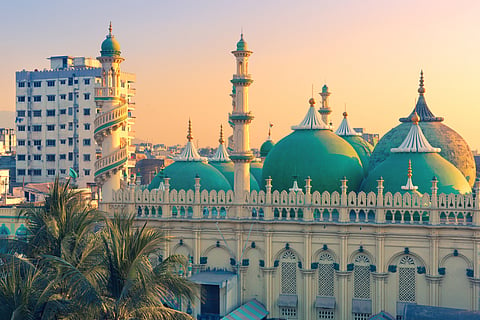
- Destinations
- Experiences
- Stay
- What's new
- Editor’s Picks
- Responsible Tourism
- CampaignsCampaigns
- Subscribe

Located at the foothills of the Girnar Hills, Junagadh, the headquarters of the Junagadh district, is the seventh largest city in Gujarat. The name "Junagadh" literally means "Old Fort." Another etymology of the name draws its lineage from "Yonagadh," which translates to "City of the Yona (Greeks)." A prehistoric city, Junagadh was part of the Mauryan Empire under Emperor Ashoka in 3 BC.
Later, the city came under the Chudasama dynasty and remained so until 1350 when Muhammad Bin Tughlaq conquered it. It then played a pivotal geographical role in the medieval history of various Sultanates and the Mughal Empire. During British rule, the city acted as a critical princely state and was later fully integrated with India after the Independence.
After years of bearing such diverse culture, Junagadh now stands as a unique portmanteau of architectural brilliance, at times bizarre and surprising yet satisfyingly beautiful.
Girnar is an ancient chain of hills located in Junagadh. A pilgrimage site, the hills are home to a whopping 866 Hindu and Jain temples spread across the summits. Travellers will have to climb about 10,000 steps to reach the summit, which begins at Girnar Taleti. The top of the summit presents a stunning panorama worth the effort. Visitors can also enjoy the Girnar ropeway.
Timings: 7 am to 6 pm
How to reach: The Girnar Hills can be reached by ST and private buses from other cities of Gujarat. Two express trains run on the Ahmedabad-Veraval line making it amply accessible through railways. The closest airport to Junagadh is Rajkot, at 103 km.
The best time to visit the Girnar Hills is from October to February, when you can walk through the fog and mist at the hills' summit.
The Mahabat Maqbara of Junagadh is one of the most unique structures in India. It is a peculiar product of the conflation of Islamicate architecture with Gothic style. The ornamentation of the mausoleum is preceded only by the marvel it presents. At once, it looks like an Indian mausoleum, a Gothic castle and a futuristic structure out of an Arabo-Gothic fable. The construction of the mausoleum was started by Nawab Mahabat Khan II in 1878 and ended in 1892 during the reign of Nawab Bahadur Khan III. The two mausoleums house the graves of Nawab Mahabat Khan II and his minister, Sheikh Bahauddin Hussain Bhar. Travellers can expect to find elaborate carvings on the buildings' inner and outer façades, delicate arches, French-style windows, columns and shining silver doorways. Each minaret is encircled from top to bottom on the adjacent mosque with winding staircases. Both buildings are topped with distinctive "onion dome" rooflines—an architectural marvel in the true sense.
Timings: 10 am to 6:30 pm
How to reach: The Mahabat Maqbara is just 1 km from the Junagadh railway station.
The Uparkot Fort is one of India's oldest surviving forts, established during the Mauryan Empire's reign by Chandragupta Maurya in 319 BC. It continued to be in use even during the Gupta period. The fort is a true blend of Hindu and Islamic architectural styles. Surrounded by a deep moat, the entrance to the fort is an ornate triple gateway with walls as high as 70 feet. Inside the entrance are the insignia of some former rulers and temples dedicated to Ganesh, Hanuman and Shakti. Close by are two colossal cannons named Neelam and Manek, forged in Cairo and brought by the Turks who sailed to Saurashtra to aid in defending Diu against the Portuguese.
Timings: 8 am to 6 pm
How to reach: The Uparkot Fort is just 4 km from the Junagadh railway station. It is also easily accessible by buses of the city.
Located to the North of the Uparkot Fort, the Khapra Kodiya Caves are the oldest caves in Junagadh Buddhist Cave Group, which includes Baba Pyare Caves and Uparkot Caves as well. These caves date back to the 3rd-4th century BCE from the reign of Emperor Ashoka and are considered the earliest monastic settlement in the area. Also known as Khangar Mahal, these caves were carved into living rock and are the plainest of all the caves in the group. Khapra Kodiya was damaged by quarrying and now only the top storey is open for tourists.
Entry Fee: Rs 20 for Indian nationals and Rs 250 for foreign visitors.
Timings: 8 am to 6 pm
How to reach: The caves are only 2 km from the Junagadh railways stations and remain fully accessible by city and private buses.
The best season to visit the caves is October to February.
